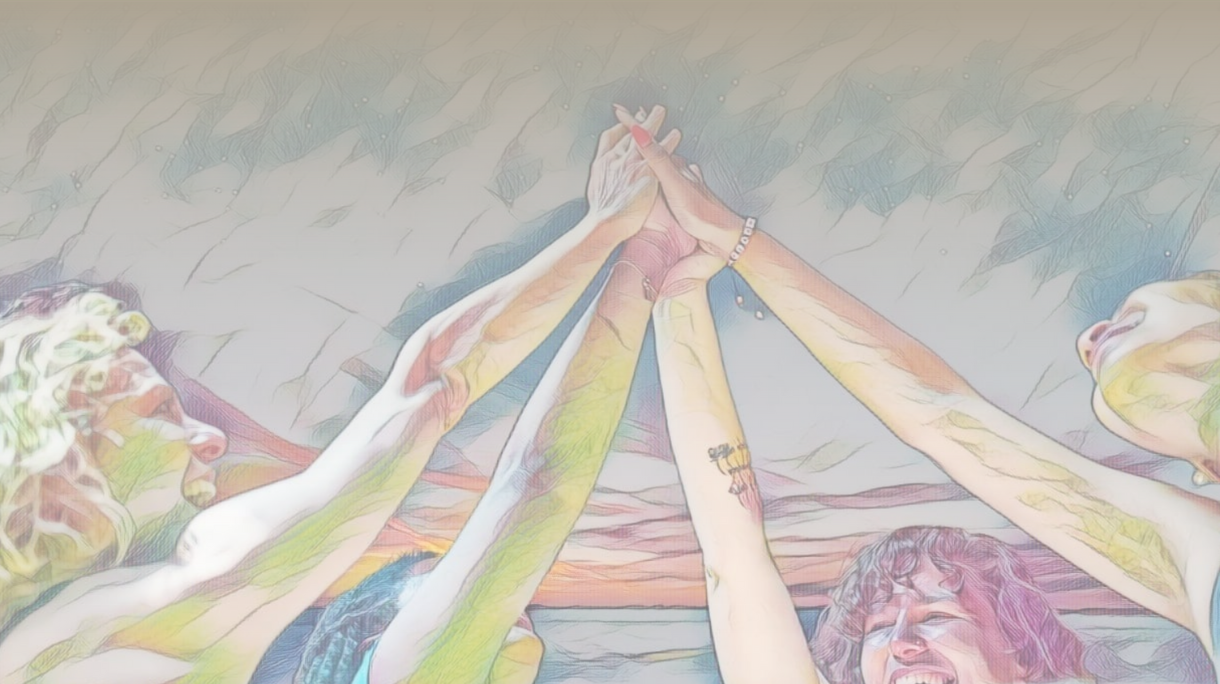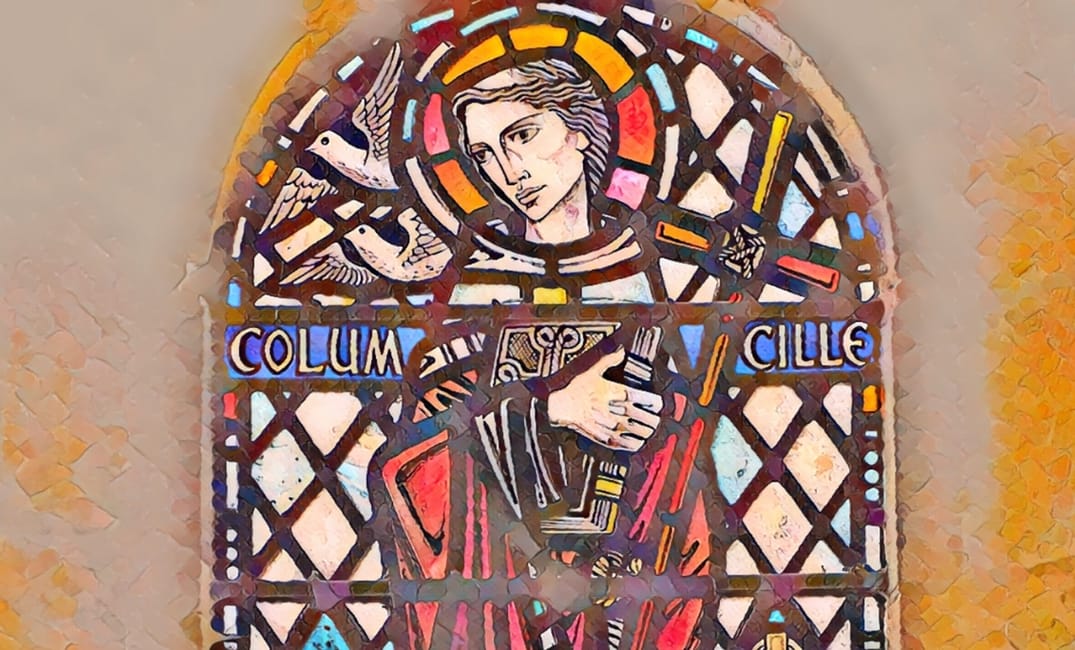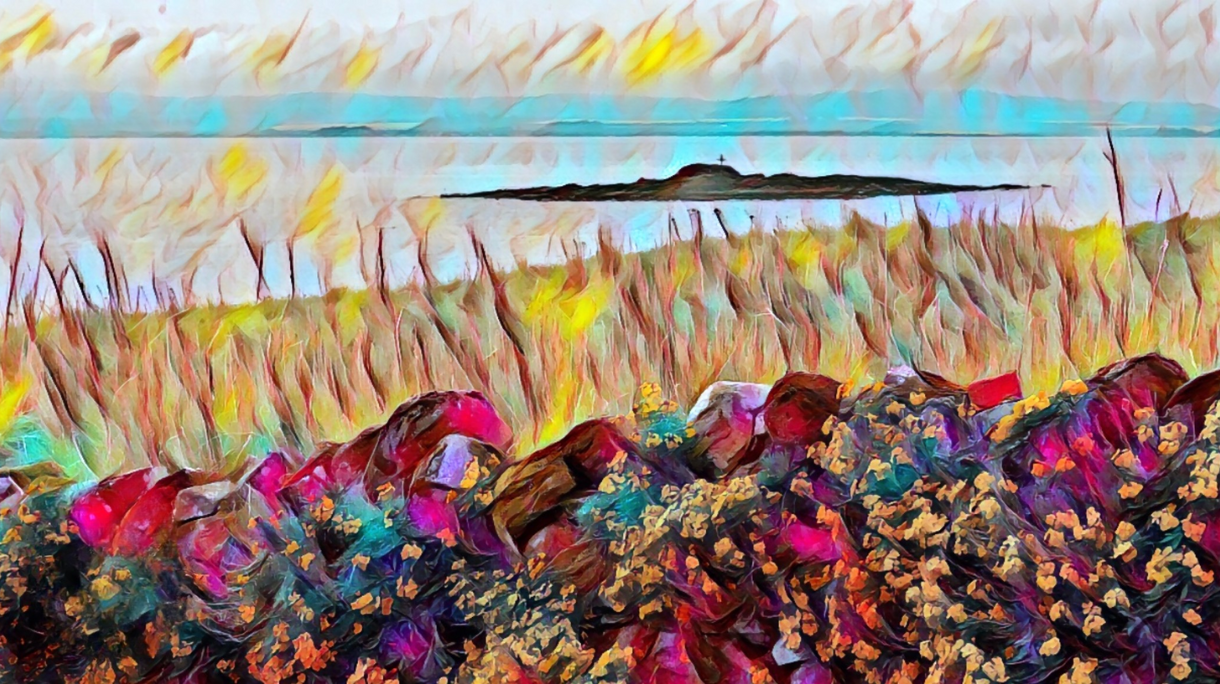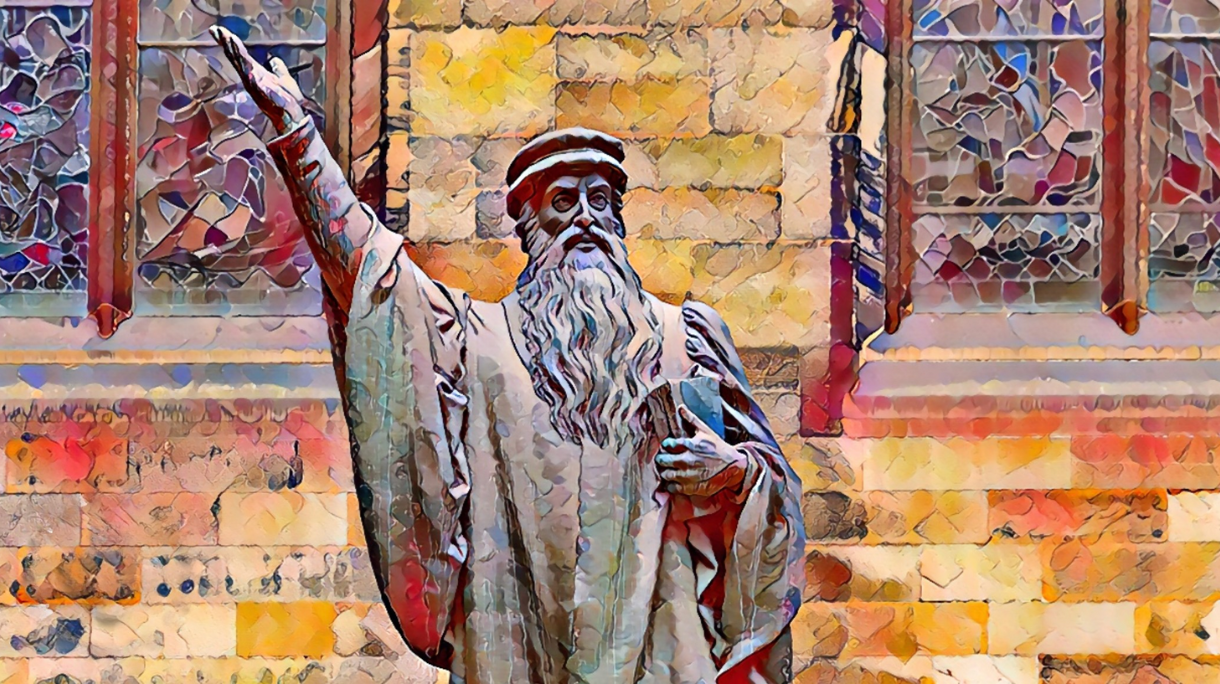Discovering the Historical and Poetic Columba
Saint Columba, known in Irish as Colum Cille, stands at the meeting point of history and legend. His life was recorded by Adomnán, the ninth abbot of Iona (AD 679–704), in a work made up almost entirely of miracle stories. These tales, shaped to highlight Columba’s sanctity, are devotional rather than strictly factual. Bede, writing his Ecclesiastical History of the English People in 731, also included chapters on Columba, showing how widely his influence was felt. Alongside these prose accounts sits the Amra Choluim Chille, an elegy in praise of Columba, attributed to the poet Dallán Forgaill soon after the saint’s death. Together, they offer two complementary ways of remembering him: the historical figure and the poetic saint.
The Historical Columba and Monastic Life
Columba was born in 521 into a powerful ruling family, possibly in Gartan, County Donegal. Fostered by a priest, Cruithnechán, he received a religious upbringing and studied wisdom and scripture. Although he did not belong to the very first generation of saintly founders, he became one of the most influential.
A curious story tells how he was sent by Abbot Finnian to St. Etchen of Clonfad to be ordained bishop, and the saint, by mistake, ordained him presbyter. St. Columba saw in this the will of God, and this story would explain why, as abbot of Iona, he retained the rank of presbyter, as did his successors.
Columba’s approach to monastic life combined discipline, prayer, and community. He lived an ascetic life of fasting, vigils, and scripture study, and he expected the same from his monks. His love of books was legendary, and he himself copied manuscripts. The monasteries he founded, particularly Iona, became centres of learning and mission. The copying and illumination of scripture, which later produced masterpieces such as the Book of Kells, can be traced back to the tradition he fostered.
His monasteries were not closed retreats but bases for mission. From Iona, monks travelled to the Picts and later to Northumbria, where they founded Lindisfarne. Columba also had strong organisational skills: he established dependent houses on Hinba, Tiree, and Durrow, each with its own prior, showing a clear structure of authority.
"What counts in these times, when our feet are getting tired and when everyone else seems to be passing us purposefully in the fast lane, is where our thoughts are set. Are we content to keep searching for the heart of God? How do we fill our minds in the daily round - with complaint or contemplation?"
- Celtic Daily Readings, from the Northumbria Community
Columba combined stern discipline with compassion. He could be strict when monks failed in their duties, but he was also remembered for his tenderness, caring for the sick, comforting the grieving, and even blessing animals. His spirituality was deeply coloured by penitence, as tradition links his exile from Ireland with remorse for earlier conflict. He also loved creation, noticing details of the natural world and praising God’s beauty in it.
"Creator of all life, Creator of being, may we spend time deeply contemplating the beautiful world around us and how it works to better get to know you and how you love and interact with us. Teach us from the new life that we see around us the depths of life we can find in you. Amen."
- Prayer by David Cole, in The Celtic Year
Columba lived at the heart of networks of communication. He travelled widely in Dalriada, sent envoys to Irish leaders and Pictish kings, and welcomed visitors to Iona. His monastery depended on outside supplies in its early years but soon became a thriving centre attracting monks from Ireland and beyond. Though Adomnán does not describe Columba’s direct relationship with local communities in detail, he presents him as a holy man deeply respected and loyally followed.
Columba in the Amra Choluim Chille
If Adomnán’s Life presents Columba through miracle stories, the Amra celebrates him through poetic images. It portrays him first as a man of holiness and spiritual authority. He is a “holy physician,” healing not bodies but souls through prayer, counsel, and ascetic discipline. His presence is seen as life-giving for the community.
The poem insists on his role as prophet and seer, calling him a “mirror of wisdom, a vessel of truth” who carries “the light of prophecy.” This imagery echoes later stories where Columba foresaw storms, deaths, or visitors arriving on Iona. His prophetic gift is a sign of his closeness to God.
Columba is also depicted as a spiritual warrior. The Amra says, “his shield was his faith, his spear was his word, his fortress was his God.” His ascetic life of prayer and preaching is imagined as a battle against sin and evil. The famous story of Columba confronting the monster in the River Ness, commanding it to retreat with the sign of the cross, vividly illustrates this spiritual warfare.
Another striking theme is Columba as teacher and guide. The poem calls him “a sage without pride” and “a tutor of the Church,” comparing him to a star guiding travellers through the night. This reflects his role as founder of Iona, training monks and spreading learning across Ireland and Scotland.
The Amra also presents Columba as protector, binding him to both Ireland and Scotland. He is “a pillar of the Gaels, a champion of Alba.” Just as he negotiated peace with kings and secured protection for his monastery, so he is remembered as an intercessor for his people. “He it is who prays for every soul that seeks him,” the poem proclaims.
"Early Celtic missionaries had a focus on discerning prayer. Deep within the rhythms of Celtic life together are practices that helped missionaries pay attention to what the Spirit was doing and once discerned, they could follow, no matter what the cost. This intentional and relentless seeking of God's will was a transformative impulse that changed the world."
- In Celtic Prayer from The Community of Aidan and Hilda, edited by David Cole
Finally, Columba is celebrated as Christ-like, the “dove of the Church” who bore Christ within his breast. His very name was understood as a symbol of purity and peace. Adomnán’s story of Columba caring for a tired crane, ensuring it was fed and sheltered, perfectly matches the poem’s vision of him as a gentle, Christ-filled presence.
History and Poetry Together
The historical Columba and the poetic Columba are not opposites but companions. Adomnán’s Life, though filled with miracles, places Columba firmly in the context of Iona and its networks of power, learning, and mission. The Amra lifts him into a timeless role as prophet, healer, warrior, guide, protector, and Christ-bearer. Taken together, they give us a picture of a man who shaped not only the church of his own time but the memory and imagination of centuries to come.
Why Columba Still Matters
Columba’s story resonates because it combines discipline, learning, mission, and imagination. He was a leader, a teacher, and a missionary, and also a symbol of holiness and hope. To remember Columba is to see how faith, community, and creativity can work together to build something lasting and inspiring.
Sources and Further Reading
Adomnán of Iona, translation and introduction by Richard Sharpe. Life of St Columba. Penguin Books, 1995.
The Amra Choluim Chilli of Dallan Forgaill, translation by John O'Beirne Crowe. McGlashan and Gill, 1871.
Saint Bede. The Ecclesiastical History of the English People: The Greater Chronicle; Bede’s Letter to Egbert. Oxford University Press, 1999.
J.H.S. Burleigh. A Church History of Scotland. Oxford University Press, 1960.
David Cole. The Celtic Year. BRF, 2020.
The Community of Aidan and Hilda, edited by David Cole. Celtic Prayer: Caught Up in Love. BRF, 2022.
The Northumbria Community. Celtic Daily Readings. Harper Collins, 2001.








Comments